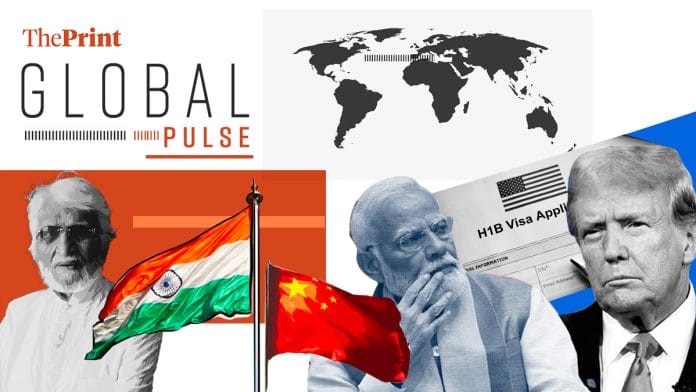New Delhi: The Indian government is prepared to work with the Trump administration to repatriate all its citizens living illegally in the US to avoid a trade war, reports Bloomberg.
A total of 18,000 undocumented Indian migrants have apparently been identified to send back home. India will “verify and start the process of deportation” even though the number could rise.
“Like several other nations, India is working behind the scenes to appease the Trump administration and avoid the brunt of its trade threats,” the report says. “In return for its cooperation, India hopes that the Trump administration would protect legal immigration channels used by its citizens to enter the US, such as student visas and the H-1B program for skilled workers.”
In 2023, Indians accounted for almost 75 percent of the 386,000 H-1B visas granted that year.
Bloomberg also reports that “any slack” in taking back undocumented migrants could adversely impact other labour and mobility agreements that India has signed with other countries. “With a jobs shortage back home, Prime Minister Narendra Modi’s government has signed migration agreements with an array of countries in recent years, including Taiwan, Saudi Arabia, Japan, Israel and others.”
India is, by all means, a “relatively modest” contributor of undocumented migrants to the US. But the number has been rising in recent years, particularly in the less-trafficked northern border, where Indians have been illegally crossing into the US.
Upsetting the US at this time comes with risks, the report adds. Trump’s notoriously volatile approach could lead to a trade war, especially with his constant refrain that India’s high import taxes hurt American businesses.
“While it’s not fully clear why the northern US border has become such a major entry point for unauthorised migrants from India, reasons could include a halt to visa-free travel for Indians to El Salvador in 2023, and the relative ease of travel to Canada for Indians,” Bloomberg reports.
Meanwhile, on this side of the world, the Chinese foreign ministry’s spokesperson says that as “two major time-honoured civilisations, developing countries and emerging economies, China and India need to focus on development and engage in cooperation”.
Global Times reports that these comments were made in response to Jaishankar’s recent entreaty for “mutual trust, mutual respect and mutual sensitivity” when it comes to bilateral relations.
India and China need to play the long game, said the Chinese foreign ministry. This is crucial to finding the “right path for big, neighbouring countries to live in harmony and develop side by side”, the spokesperson said at a press conference.
Remaining committed to the Five Principles of Peaceful Coexistence—better known in India as the Panchsheel agreement—is crucial for an “orderly multipolar world”, Global Times quotes the spokesperson as saying.
The BBC reports on the curious case of MF Husain’s art as the police were ordered by a court to seize two “offensive” paintings for hurting religious sentiments.
The Delhi Art Gallery (DAG) had hosted an exhibition—Husain: The Timeless Modernist—which featured two of his paintings that allegedly depicted Hindu gods in an offensive manner. The exhibition ran from 26 October to 14 December and featured over 100 of the artist’s works.
The complainant was a lawyer, Amita Sachdeva, who posted on X that she had photographed these “offensive paintings”.
“The paintings that Ms Sachdeva shared online depicted Hindu gods Ganesha and Hanuman, alongside nude female figures. She also alleged that the Delhi police had failed to file a report,” the report says. “She later petitioned the court to preserve the CCTV footage from the gallery during the period when the paintings were reportedly on display.”
A judge at the Patiala House Court in Delhi said that the police had accessed the footage, submitted their report, and found that the exhibition was held in a private space and intended to only showcase Husain’s original work. The DAG said it’s been cooperating with the police, adding that of the over 5,000 visitors who came to see the exhibition, the complainant was the only one with a problem.
Hussain has a chequered history in India, the BBC observes. His career was “marked by controversy when he was accused of obscenity and denounced by hardline Hindus for a painting of a nude goddess”. He had to publicly apologise for his painting Mother India in 2006, and in 2008, the Supreme Court had refused to launch criminal proceedings against him over his art.
“The court had then dismissed an appeal against a high court ruling that quashed criminal proceedings against Husain in the cities of Bhopal, Indore and Rajkot, condemning the rise of a ‘new puritanism’ in India,” the BBC reports.
But things have changed now. “Many believe there is a rising tide of illiberalism against artistic expression in India,” the BBC writes.






